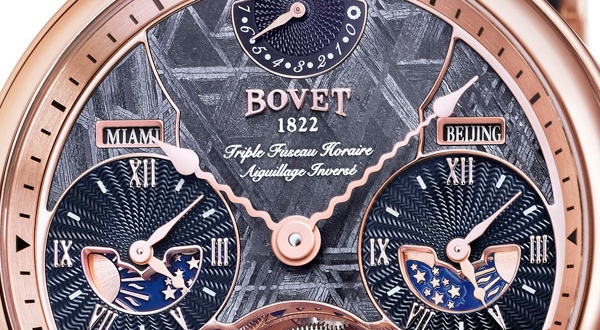This year, the Bovet Watches Paris Replica collections feature two materials which the artisans of the House have been mastering and proposing since 2008: aventurine and meteorite.
It is a transformation of the silica contained in sand and most minerals used to make the glass that serves as a basis for the delicate fabrication of aventurine. It was in Murano, the capital of artistic glassware, that the first “recipes” emerged in the 17th century, where they have been secretly preserved for years by the Miotti family, who are credited with its invention. To create aventurine, tinted glass is combined with copper and protoxide of copper inclusions, whose triangular and hexagonal crystals blaze with a thousand sparkles. The composition and manufacture of aventurine are empirical processes, and only an experienced, expert artisan can obtain a homogenous result. This is why aventurine remains a rare material. Although it is a processed material, the aesthetic qualities of aventurine have helped it find favor with jewelers and even gemologists, who have labeled it “goldstone” in English and “rivière d’or” (“river of gold”) in French.
The sky is the origin of the second material highlighted this year by Bovet Swiss Watch Replica 1822’s dial-makers, who showcase meteorite in several of the models in the 2017 collection. While a considerable number of meteorites fall to Earth each year, less than 2% of them belong to the “irons” category that can be used in watchmaking. And unfortunately, very few of them are large enough to provide enough material for a dial. This kind of meteorite comes from the nuclei of large celestial bodies (of at least several hundred kilometers in diameter). The Gibeon meteorite from which Bovet dials are made comes from Namibia and its weight before crashing to Earth is estimated at 26 tons. Many hundreds of kilograms have been found scattered in various fragments since its discovery in 1838, but very few of these can be exploited for watchmaking purposes. This ferrous meteorite, which is 4 billion years old, also contains cobalt and phosphorus in minute quantities. The temperatures experienced by a ferrous meteorite when it enters the Earth’s atmosphere coupled with the speed at which it cools produce unique geometric crystalline structures. These structures, referred to as Widmanstätten patterns, give each meteorite its unique appearance and identity.
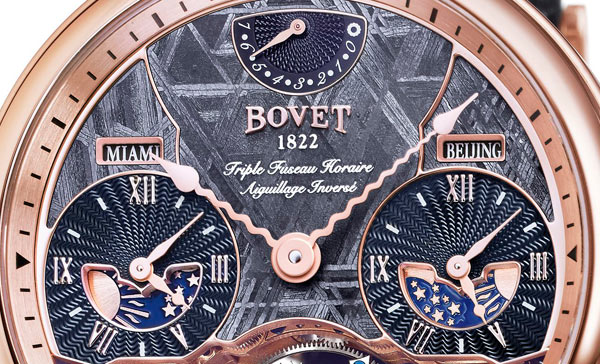
Amadeo® Fleurier Rising Star, meteorite dial © Bovet
Unfortunately, merely procuring these materials does not equate with creating dials. Given the extreme rarity and recent appearance of aventurine and meteorite in the watchmaking industry, artisans cannot rely on the experience of their predecessors. And so they have used their own expertise to develop the techniques required to exploit these two materials with their unique characteristics.
In theory, meteorite, which is 92% iron, should be easy enough to work. However, its unique crystalline structure and the various pressures and temperature variations to which it has been subjected make it an inhomogeneous metal studded with inclusions. Machining meteorite is therefore a particularly delicate process. The next stage is to plunge the dial into an acid bath, whose duration defines the contrasts that will subsequently appear in the Widmanstätten patterns. For the 2017 collection, a black PVD treatment reveals the nuances on the surface while protecting the dial from oxidation. Finally, pad-printing and the addition of the hour-markers complete this delicate process and determine the dial’s final appearance.
The metallic flakes responsible for the starry sparkle of aventurine are themselves inclusions that make the material particularly delicate to handle. This difficulty is compounded by the hardness and fragility of the glass. As glass is an inert material, the expansion coefficients of the metals to which it will be affixed must also be factored in to avoid any breakages caused by temperature variations.
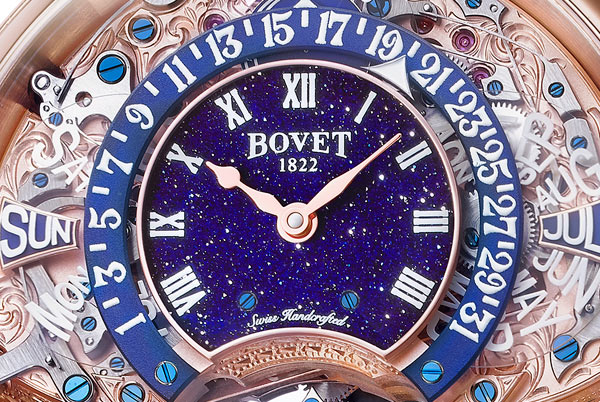
Amadeo® Fleurier Virtuoso III, aventurine dial © Bovet
The craftsmen of the BOVET 1822 dial Manufacture have successfully mastered each of the stages involved in the production of these dials, joining the ranks of the greatest specialists in the process and imbuing Bovet 1822 timepieces with a strong symbolic and universal dimension.
The Bovet Pininfarina OttantaSei 10-Day Tourbillon watch is also rather mild – especially in the two titanium versions. I have to acknowledge that given the “bow style” crown position at 12 o’clock, it wears at a quite sizable trend, but it isn’t uncomfortable. Bovet asserts that even in gold, the situation only weighs 51.66 grams (minus the strap). The whole point of this design was to create the Bovet Pininfarina OttantaSei 10-Day Tourbillon light-looking… and light-feeling. There are a total of four sapphire crystals in the case, and the use of flat crystals on the top in addition to the horizontal planes on the sides make the watch feel just like a massive coin on your wrist. Laser engraving is used on the faces of the case to publish the “limited edition” and “Pininfarina” tagging, whereas the partial seconds indicator scale is printed onto the one of the main crystals and then read on the other hand. To view and operate the movement is real beauty. Bovet chose to keep things as simple and elegant as possible by providing the time on a subsidiary dialup, large-diameter tourbillon (which doubles as the small seconds indicator), and a power reserve indicator.
The Amadeo® Fleurier Virtuoso III timepiece, 5-Day Tourbillon with Retrograde Perpetual Calendar and Reversed Hand-Fitting is available with a blue aventurine or meteorite dial and a 46mm Amadeo convertible case in white or red gold. It houses the hand-wound movement Caliber 17BM01AI-QPR with tourbillon 1 minute. This is a limited edition of 39 timepieces per gold colour.
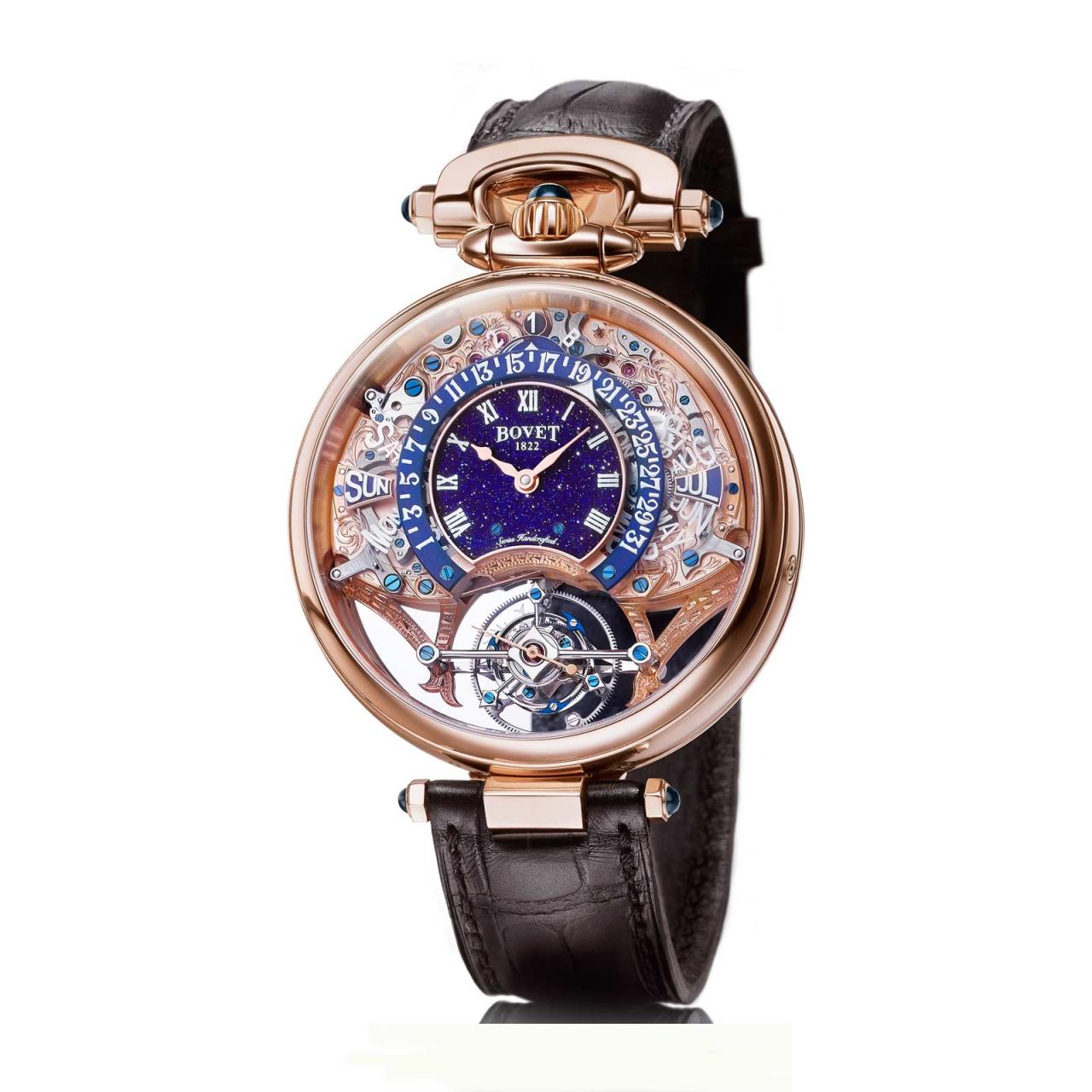
Amadeo® Fleurier Virtuoso III, aventurine
The Amadeo® Fleurier Rising Star, 7-Day Tourbillon with Triple Time Zone and Reversed Hand-Fitting is available with a choice of three dials: meteorite, or blue or green aventurine. The 46mm Ameadeo convertible case contains the hand-wound movement Caliber 16BM01AI. For this model, only 19 pieces will be produced per gold colour.
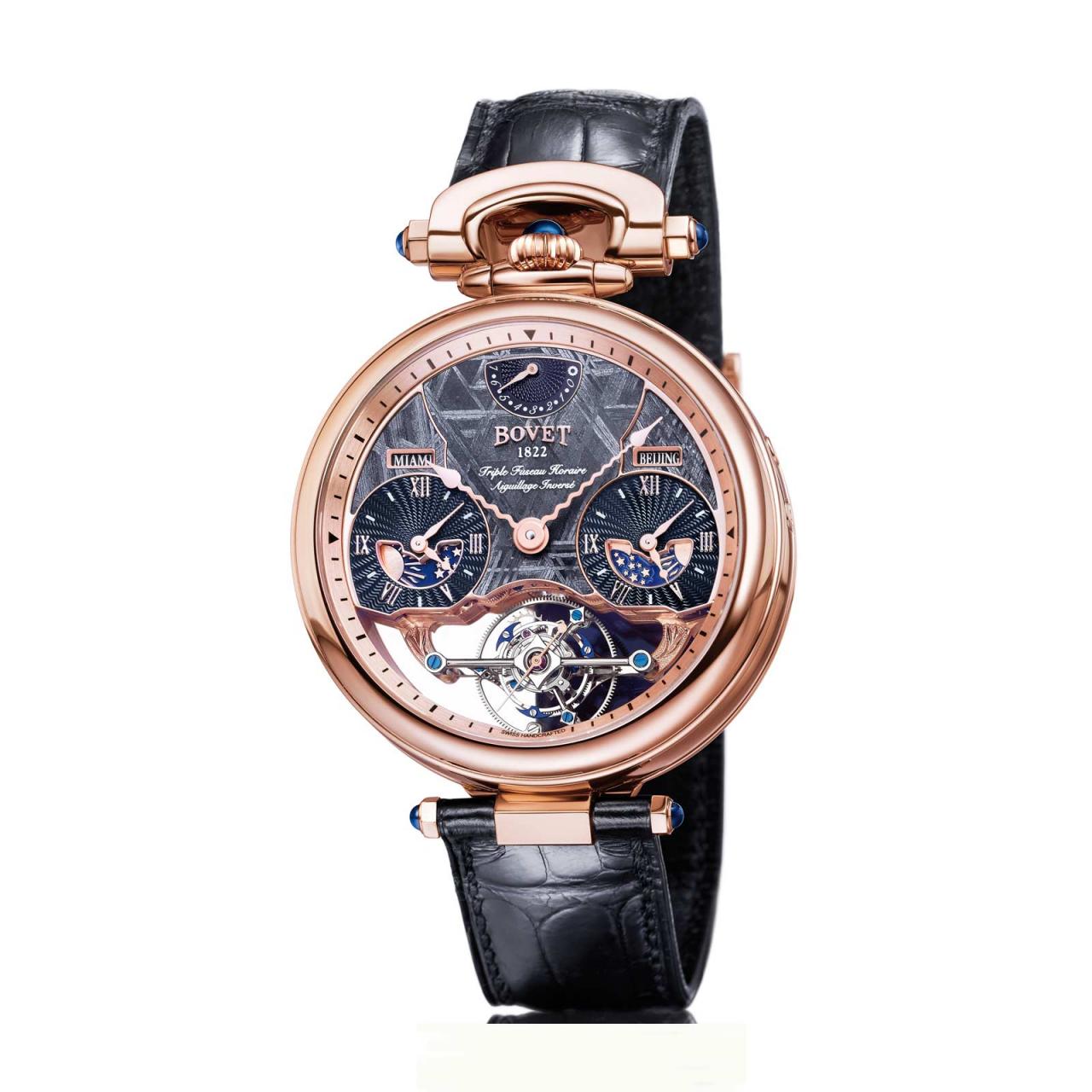
Amadeo® Fleurier Rising Star, meteorite dial © Bovet
